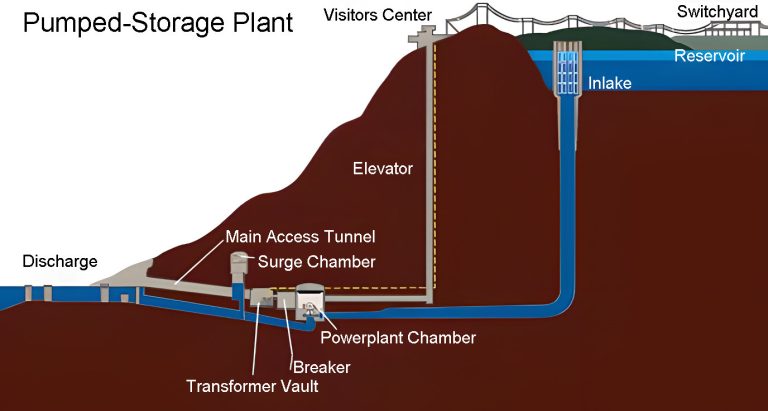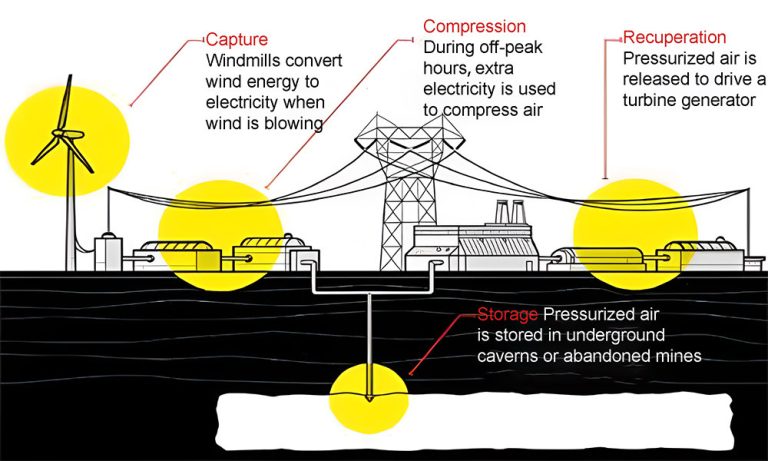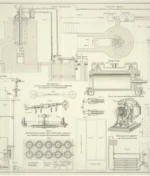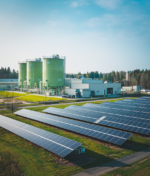
Energy Storage Solutions
The world is adopting renewable energy alternatives at a remarkable pace to address the growing environmental crisis caused by CO₂ emissions. Renewable energy systems have great potential for decarbonizing the environment as they do not produce greenhouse gases or other polluting emissions. However, renewable energy systems (RES) rely on natural resources such as sunlight, wind, water and geothermal, which are often unpredictable depending on weather, season and year. To compensate for these discontinuities, renewable energy can be stored by various techniques and used in a consistent and controlled manner when needed. Many researchers around the world have made significant contributions over the last century to develop new energy storage methods that are efficient enough to meet the growth in energy demand and compatible with technological breakthroughs. (1)
The table below shows the developments in energy systems by year.
| Year | Energy Storage System | Description |
| 1839 | Fuel cell | In 1839, Sir William Robert Grove invented the first simple fuel cell. It produced electricity and water with hydrogen and oxygen mixed in the presence of an electrolyte. |
| 1859 | Lead acid battery | French physicist Gaston Planté invents the first practical rechargeable battery version based on lead-acid chemistry |
| 1883 | Flywheel energy storage | The first flywheel energy storage system (FES) was developed by John A. Howell in 1883 for military applications. |
| 1899 | Nickel-Cadmium battery | Swedish scientist Waldemar Jungner has invented the nickel-cadmium battery, a rechargeable battery with nickel and cadmium electrodes in potassium hydroxide solution. |
| 1907 | Pumped hydro energy storage | The first pumped hydro storage facility was built in 1907 at the Engeweiher pumped storage facility near Schaffhausen, Switzerland. |
| 1960 | Sodium sulfur battery | The first sodium sulfur battery was developed by the Ford Motor Company in the 1960s. |
| 1969 | Superconducting magnetic energy storage | In 1969, Ferrier introduced a superconducting magnetic energy storage system to meet daily variations in energy demand. |
| 1977 | Geothermal energy storage | In 1977, a 42-hole geothermal energy storage system was built in Sigtuna, Sweden. |
| 1978 | Compressed air energy storage | The world's first industrial-scale compressed air energy storage (CAES) plant was built in Germany in 1978 with a capacity of 290 MW. |
| 1982 | Supercapacitor | Pinnacle Research Institute (PRI) developed the first supercapacitor with low internal resistance for military applications in 1982. |
| 1983 | Vanadium redox flow battery | The vanadium redox flow battery was developed by M. Skyllas-Kazacos and colleagues at the University of New South Wales, Australia, in 1983. |
| 1983 | Polysulfur bromide flow battery | A bromine-polymer polysulfide flow battery was first developed in 1983 by Remick et al. |
| 1991 | Lithium-ion battery | In 1991, the first commercial lithium-ion battery was launched. |
| 2007 | Paper battery | Dr. Robert Linhardt, Dr. Omkaram Nalamasu and Dr. Pulickel Ajayan introduced the paper battery concept at Rensselaer Polytechnic Institute in 2007. |
Electric Energy Storage
Pumped hydroelectric storage (PHS): It has the largest commercially available storage capacity. The basic idea is simple; pump water from a lower reservoir to an upper reservoir using excess electrical energy generated during off-peak hours.
Flywheel energy storage systems: Stores energy in the form of angular momentum. At peak demand time, the energy is used to rotate a mass through a motor. During discharge, the motor becomes a generator and produces electricity.
Compressed air energy storage (CAES) system: Based on the idea of compressing air using excess electricity during off-peak hours. The compressed air can then be used with a gas turbine to generate electricity.
Batteries and fuel cells: Electrochemical cells that convert stored chemical energy into electrical energy.
Superconducting magnetic energy storage (SMES) method: Stores electrical energy in a magnetic field generated by direct current.
Capacitors Store energy in the form of an electric potential created between the two sides of the capacitor. During off-peak hours, the two plates are charged to create the potential, and during peak hours the potential is discharged.
The images below show the schematics of two of the electrical energy storage methods mentioned above.


Storage methods can be categorized according to capacity and discharge duration. Life cycle assessment (LCA) is an important tool to assess the energy consumption and environmental impact of renewable energy processes. Life cycle assessment (LCA) is research carried out to identify and assess the environmental impacts of a product or service. LCA considers the materials, resources and energy going into the system, as well as the waste and pollution coming out of the system.
Energy storage methods can be categorized under two different headings. These titles can be expressed as electrical energy storage and thermal energy storage.
Thermal Energy Storage
Sensible Heat: By changing the temperature of liquid or solid materials during peak hours of solar energy, it stores energy by utilizing the temperature difference between the original temperature of the material.
Phase Change Material Storage (PCMS): When a material changes phase, heat is absorbed or released. Energy can be stored or released by the phase change of storage materials.
Sorption: The capture of a gas or vapor (sorbate) by a solid or liquid substance (sorbent). When heat is supplied to the system, compound AB is split into compounds A and B and the energy is stored losslessly as the chemical potential of A and B. When A and B combine, compound AB is formed and heat is released.
Solar Fuels: Sunlight can be concentrated using optical devices, and the heat from the concentrated solar energy can be used to perform endothermic chemical transformations to produce stored and portable fuels. (3)
Conclusion
The increasing demand for solar energy storage methods can be explained by the unstable nature of solar energy, the exponential increase in energy demand with a growing population and legal obligations. In addition, when the costs are also taken into consideration, an understandable result is encountered. As mentioned above, there are many methods for storing this energy. It is important to choose among these methods according to the needs. Depending on the application they address, these systems can be located near the generator, transmission line, distribution transformer or consumer. It is difficult and inadequate to compare different storage methods based on only one factor. For example, it should be noted that the materials required for some storage methods are rare. This will make them less desirable than others, such as ruthenium for capacitors and lithium for batteries. Implementing appropriate energy storage systems is important to ensure energy security and reduce harmful environmental impact. When using renewable energy sources such as solar energy, storage methods based on non-renewable sources would not only contradict the logic of the issue, but would also make the system more disadvantageous than other methods in terms of environmental damage.
Bibliography:
- Chinese Roots Global Impact, Energy Storage and Saving, J. Mitali, S. Dhinakaran, A.A. Mohamad, 2022
- 3 Types of Electrical Energy Storage Technologies- Renhotec EV
- CALIFORNIA SOLAR ENERGY COLLABORATIVE, Solar Energy Storage Systems Review, , Yu Hou, Ruxandra Vidu and Pieter Stroeve




